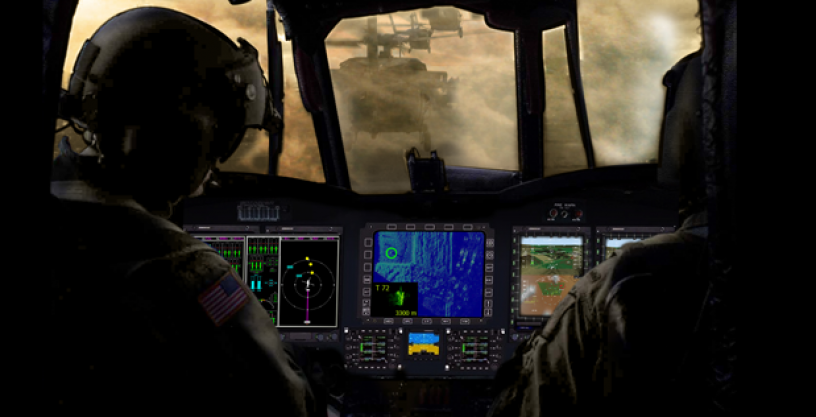
Summary
Military aircraft are vulnerable in conditions of degraded visibility due to pilots’ inability to discern obstacles, cables, or other aircraft during flight or while landing. The danger is particularly acute in demanding, harsh environments such as Iraq and Afghanistan.
The MFRF program seeks to develop a multifunction onboard sensor to perform a variety of tasks that enhance the survivability of rotorcraft and also provide lethality improvements for combat missions in zero-zero conditions. The sensor is intended to give pilots the following: ability to land safely in brownout/whiteout conditions; collision avoidance with other aircraft, obstacles and cables; terrain following; weather avoidance; and ground mapping. Planned lethality enhancements include ISR for target detection and ID, weapons guidance, and data link. This program does not intend to perform at currently accepted frequencies but seeks to develop a common RF system that will use agile frequencies, waveforms, and apertures to optimally interweave these functions according to the aircraft's missions.
This program seeks to demonstrate a multifunctional, software-adaptable system architecture which will provide for future expanded capability without adding new hardware. It is expected that this “plug and play” multifunctional system could be employed as a replacement sensor on existing aircraft, as an insertion into future aircraft, such as the Joint MultiRole (JMR) aircraft, or as a sensor suite suitable for unmanned aircraft. This will require antenna architectures that are flexible and that consume as little area and power as possible.
Office
Strategic Technology OfficeThis program is now complete
This content is available for reference purposes. This page is no longer maintained.
